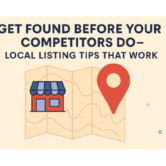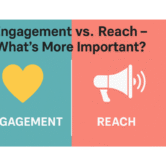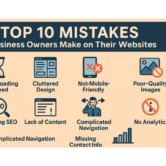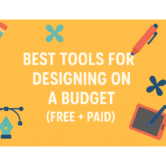
“The Anatomy of a High-Converting Landing Page”
A high-converting landing page is a powerful tool for businesses and marketers aiming to turn visitors into leads, customers, or subscribers. Unlike a standard webpage, a landing page is designed with a singular focus: to drive a specific action, such as signing up for a newsletter, downloading an e-book, or making a purchase. Crafting a landing page that converts requires a strategic blend of design, psychology, and content. In this step-by-step guide, we’ll break down the essential elements of a high-converting landing page and show you how to create one that aligns with your brand and maximizes results.
“At Help Me Buddy IT, we specialize in designing high-converting landing pages.”
What is a Landing Page?
A landing page is a standalone webpage created for a specific marketing or advertising campaign. It’s where a visitor “lands” after clicking on a link from an email, ad, social media post, or search engine result. The goal is to guide the visitor toward a single, clear action—whether that’s filling out a form, purchasing a product, or registering for an event. A high-converting landing page is optimized to minimize distractions and maximize the likelihood of the visitor completing the desired action.
“Great landing pages balance visuals with clarity—see how our web design services do this.”
Why Landing Pages Matter for Conversions
Landing pages are critical because they focus entirely on conversion. Unlike a homepage, which serves multiple purposes (e.g., showcasing your brand, linking to products, or sharing blog posts), a landing page has one job: to convert. According to HubSpot, companies with 10-15 landing pages see a 55% increase in lead generation compared to those with fewer than 10. A well-designed landing page can:
- Increase conversions: By focusing on a single call-to-action (CTA), landing pages reduce distractions and guide visitors toward action.
- Improve ad performance: Tailored landing pages align with specific campaigns, ensuring a seamless user experience from ad to conversion.
- Build trust and credibility: A professional, targeted landing page reassures visitors that they’re in the right place.
- Provide measurable results: Landing pages allow you to track key metrics like conversion rates, bounce rates, and user behavior.
Now, let’s dive into the anatomy of a high-converting landing page and how to create one step by step.
Step-by-Step Guide to Creating a High-Converting Landing Page
Step 1: Define Your Goal and Audience
Before designing your landing page, clarify its purpose. What action do you want visitors to take? Common landing page goals include:
- Generating leads (e.g., collecting email addresses for a newsletter).
- Driving sales (e.g., promoting a product or service).
- Encouraging registrations (e.g., for a webinar or event).
Next, identify your target audience. Understand their pain points, motivations, and preferences. For example, if you’re promoting a fitness app, your audience might include busy professionals looking for quick workouts. Tailor your messaging and design to resonate with their needs.
Pro Tip: Create a buyer persona to guide your content. Ask yourself: What problem are they trying to solve? How does your offer address it?
Step 2: Craft a Compelling Headline
Your headline is the first thing visitors see, and it needs to grab attention in seconds. A strong headline is clear, concise, and communicates the value of your offer. According to Copyblogger, 8 out of 10 people will read your headline, but only 2 out of 10 will continue reading the rest of the page.
Tips for a High-Converting Headline:
- Be specific: Instead of “Grow Your Business,” try “Double Your Sales in 30 Days with Our Proven Strategy.”
- Highlight benefits: Focus on what the visitor gains, e.g., “Get Your Free E-Book on Mastering Social Media Marketing.”
- Keep it concise: Aim for 6-12 words for maximum impact.
- Align with your campaign: Ensure the headline matches the messaging in the ad or email that brought the visitor to the page.
Example: If you’re offering a free SEO guide, your headline could be: “Boost Your Website Traffic with Our Free SEO Guide.”
Step 3: Write Persuasive Copy
Your copy should convince visitors to take action by addressing their needs and showcasing the value of your offer. Keep it clear, benefit-focused, and concise.
Ready to build your own high-converting landing page? Work with Help Me Buddy IT.”
Key Elements of Persuasive Copy:
- Subheadline: Expand on your headline with a brief explanation of the offer. For example, “Learn expert SEO techniques to rank higher on Google in just 7 days.”
- Benefits over features: Instead of listing product features (e.g., “Our app has a workout tracker”), highlight benefits (e.g., “Achieve your fitness goals with personalized













